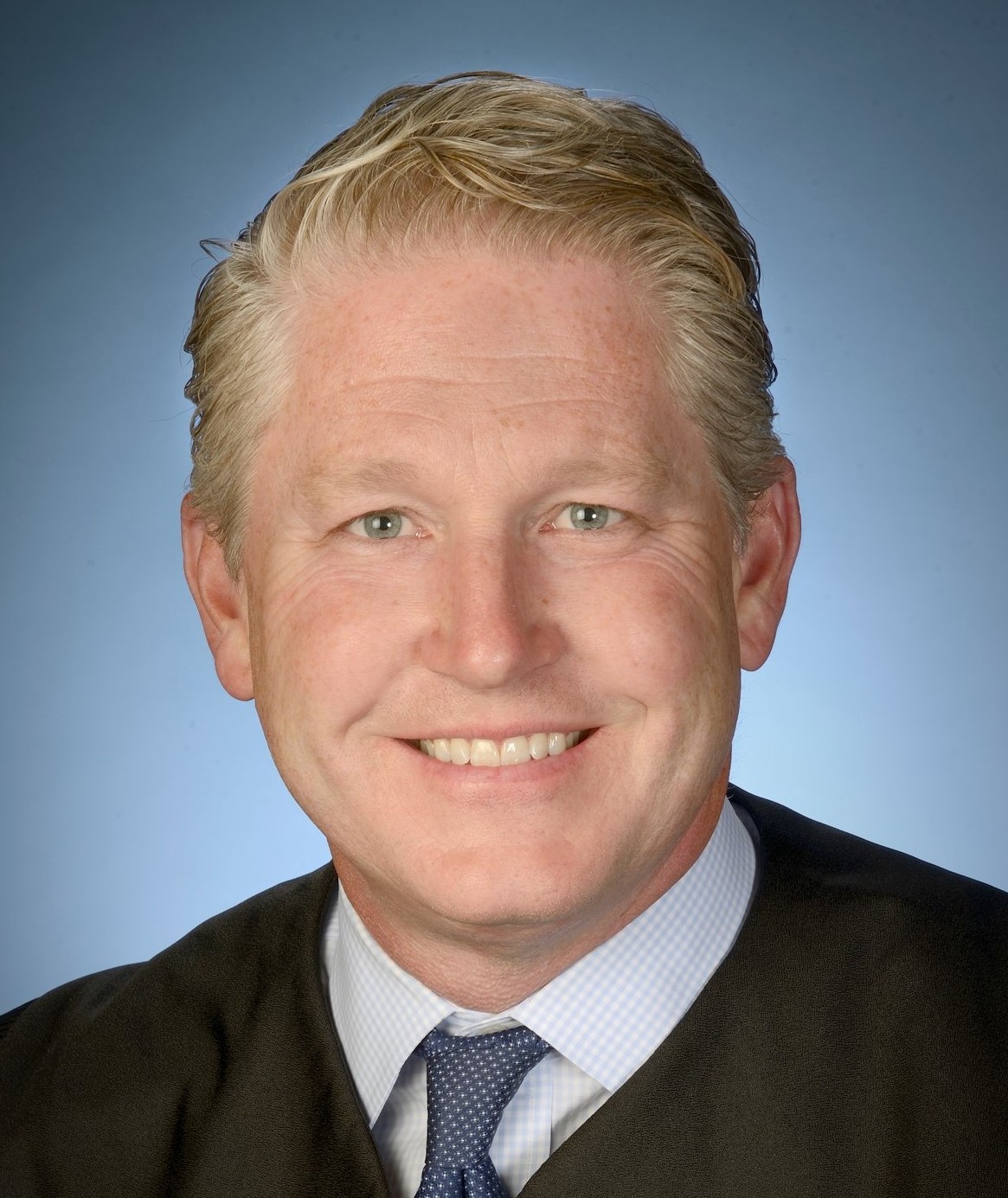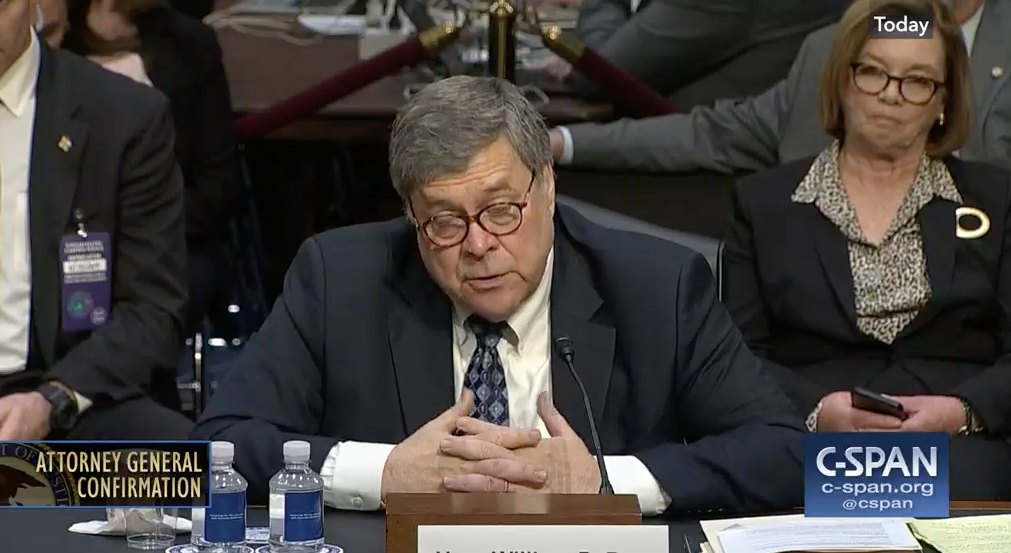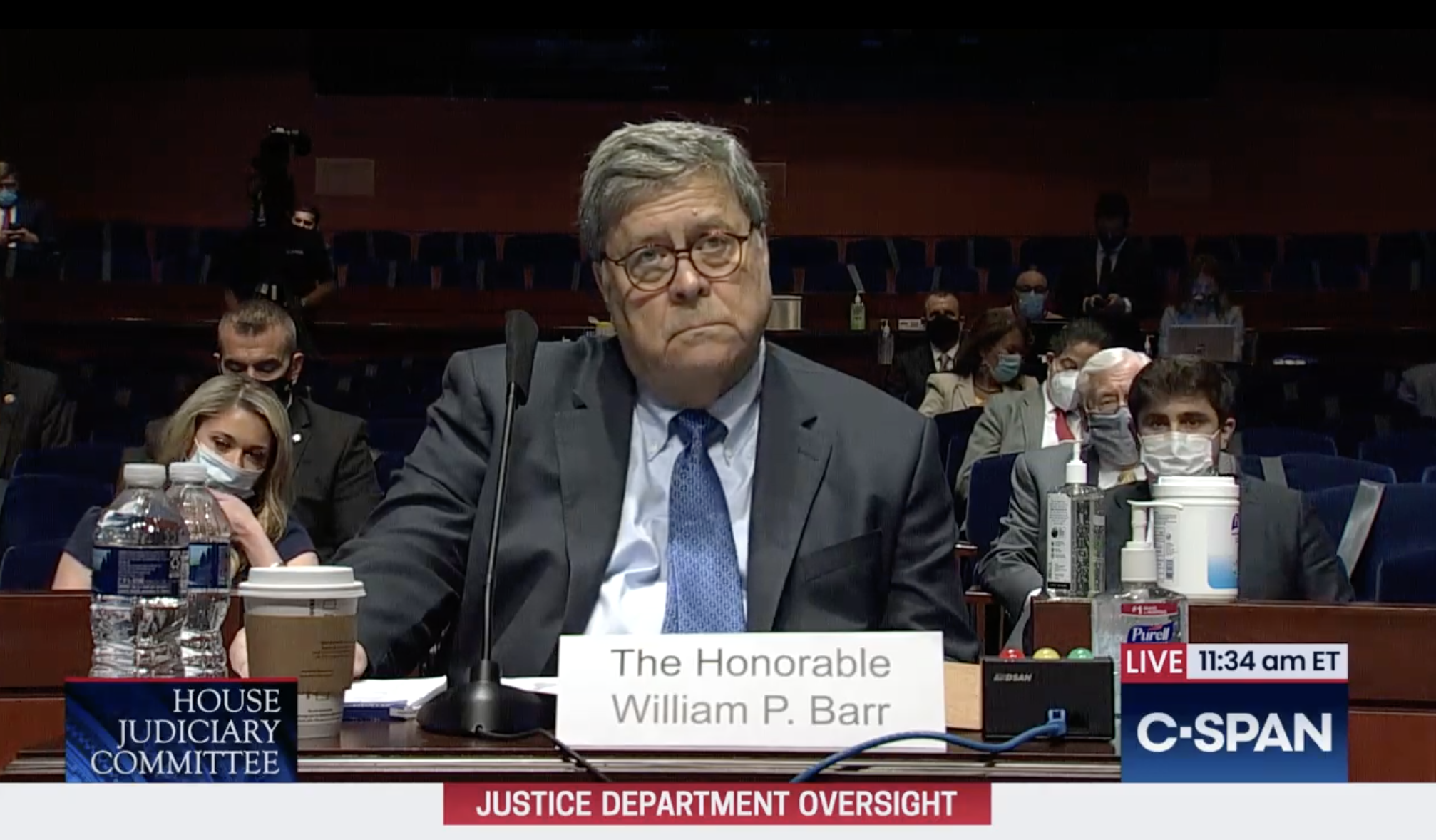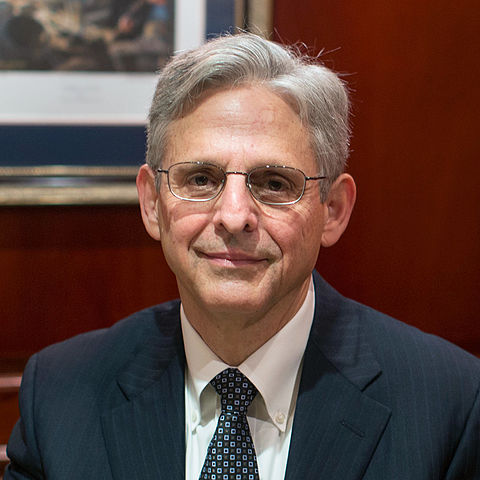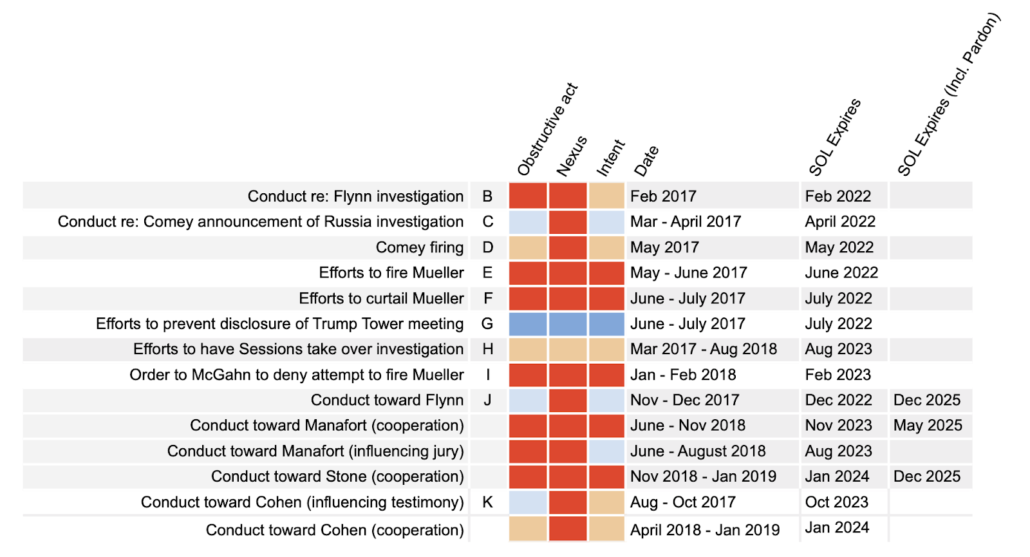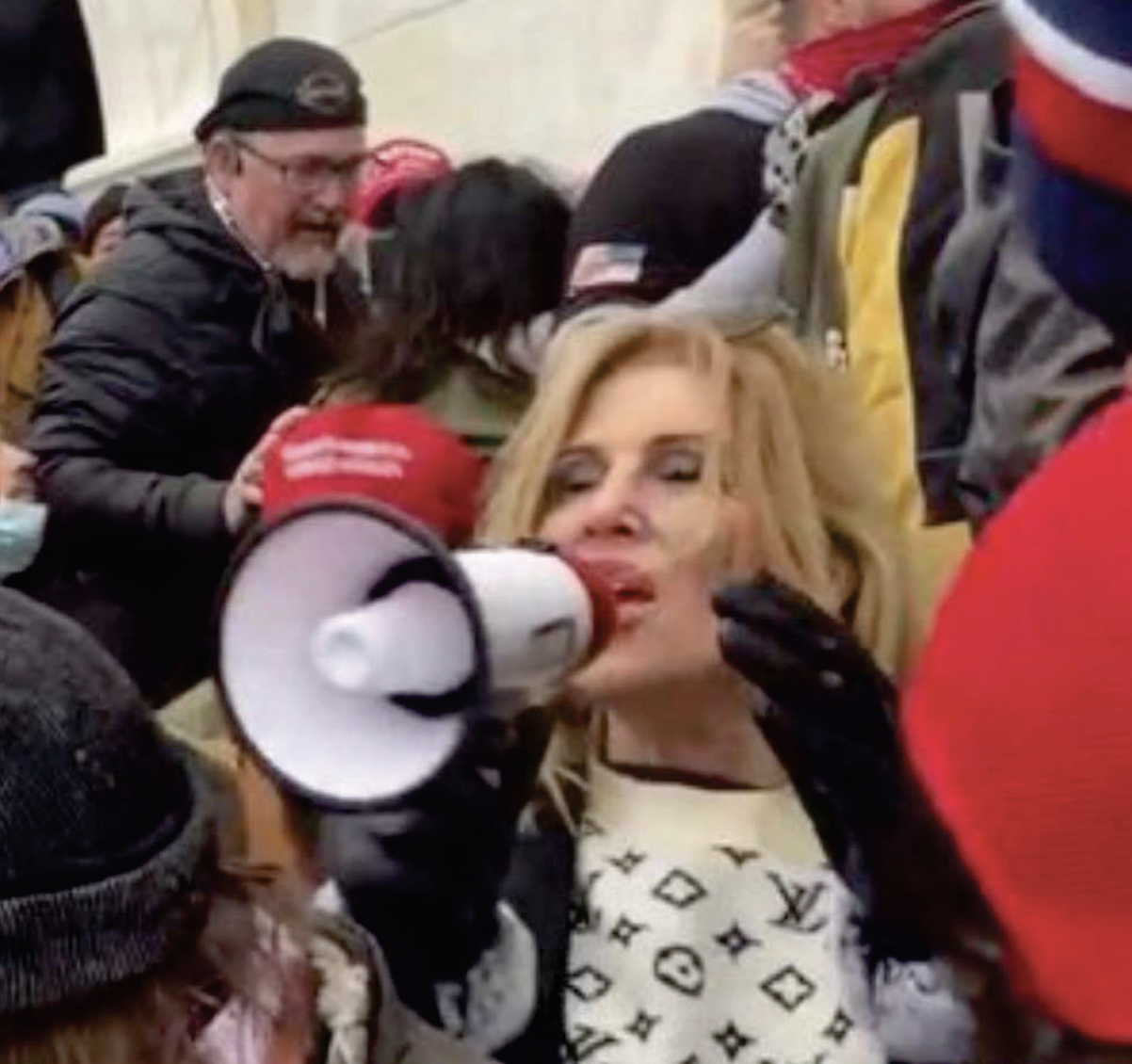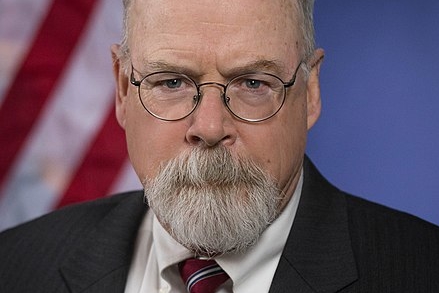Demands for Sua Sponte Do-Overs and Billy Barr’s Thought Experiment about Trump’s Criminality
In a post last year about what was then a still heavily-redacted Amy Berman Jackson opinion ordering DOJ to release a Barr memo covering up the Mueller investigation, I wrote that this might finally be the case where DOJ would be held accountable for bullshit claims made in service of protecting secrets in FOIA cases.
Will Amy Berman Jackson Finally Break the Spell of OLC Feeding Bullshit FOIA Claims to DC District Judges?
Yesterday, Judge Amy Berman Jackson ruled that the government must turn over a memo written — ostensibly by Office of Legal Counsel head Steve Engel — to justify Billy Barr’s decision not to file charges against Donald Trump for obstructing the Mueller Investigation. The Center for Responsibility and Ethics in Washington FOIAed the memo and sued for its release. The memo itself is worth reading. But I want to consider whether, by making a nested set of false claims to hide what OLC was really up to, this opinion may pierce past efforts to use OLC to rubber stamp problematic Executive Branch decisions.
A key part of ABJ’s decision pivoted on the claims made by Paul Colburn, who’s the lawyer from OLC whose job it is (in part) to tell courts that DOJ can’t release pre-decisional OLC memos because that would breach both deliberative and attorney-client process, Vanessa Brinkmann, whose job it is (in part) to tell courts that DOJ has appropriately applied one or another of the exemptions permitted under FOIA, and Senior Trial Attorney Julie Straus Harris, who was stuck arguing against release of this document relying on those declarations. ABJ ruled that all three had made misrepresentations (and in the case of Straus Harris, outright invention) to falsely claim the memo was predecisional and therefore appropriate to withhold under FOIA’s b5 exemption.
Yesterday, the DC Circuit decided that (unless DOJ appeals again) yes, this will be that case. It ordered DOJ to release the rest of the Barr memo and it did so for precisely the reasons ABJ laid out: DOJ had played games with its claims about what was in the memo.
The opinion, written by Sri Srinivasan and joined by Judith Rogers and David Tatel, agreed with ABJ that the Department’s Declarations evolved but yet never actually described the predecisional advice at hand — which ABJ and the Circuit agree pertained to what Barr should say to Congress about Mueller’s results.
The Department’s submissions during the course of this litigation have at various times suggested three decisional processes to which the March 2019 memorandum might have pertained. The first two, as the Department acknowledges, cannot support its reliance on the deliberative-process privilege. As for the third, although that one might well have justified the Department’s invocation of the privilege, the Department never relied on—or even mentioned—that decisional process in the district court until the Department had already noticed its appeal to this court. And the district court was not required to grant judgment to the Department on a theory the Department never presented before taking an appeal.
1.
The first of the three decisional processes suggested in the Department’s submissions to the district court concerned whether to charge President Trump with a crime. Although the Department has since clarified that it was never in fact considering a prosecution, the Department’s submissions to the district court appeared to indicate in various ways that the March 2019 memorandum made recommendations about an actual charging decision.
[snip]
2.
If the Department’s analysis of whether the evidence in the Mueller Report would support an obstruction-of-justice charge did not in fact relate to a decision about whether to initiate or decline a prosecution, then why engage in that analysis? The Department’s submissions to the district court perhaps could be interpreted to indicate that the memorandum’s analysis of that question, if not related to an actual charging decision, was instead part of an abstract thought experiment. On that conception, the memorandum formed part of an academic exercise to determine whether President Trump’s conduct met the statutory definition of obstruction, solely for Attorney General Barr’s information, without any connection to any ensuing action by Barr or the Department.
[snip]
3. Because there was never an actual charging decision to be made in this case, and because the Department does not rely on a mere thought experiment about whether the evidence would support a charge as the relevant decisional process, the question naturally arises: what is the decisional process that the Department believes justifies its withholding of the March 2019 memorandum? The Department’s answer, per its briefing in our court, is that the memorandum “was intended to assist the Attorney General in deciding what, if anything, to communicate to Congress and the public about whether the evidence recounted in the Special Counsel’s report was sufficient under the Principles of Federal Prosecution to support a prosecution.” Dep’t Br. 25–26. That is, the deliberations about whether the evidence in the Report amounted to a crime went to deciding whether to say something to the public on that issue, not deciding whether to initiate a prosecution (which was never on the table).
[snip]
And here, it is now apparent that the March 2019 memorandum recommended reaching a conclusion on the evidentiary viability of an obstruction-of-justice charge as a means of preempting a potential public reaction to the Mueller Report. In that light, if the Department’s submissions to the district court had connected the memorandum to a decision about making a public statement, then the district court might well have concluded that the memorandum was privileged. But that is not how the Department elected to justify its invocation of the privilege in the district court.
And because DOJ claimed that the memo pertained to one kind of predecisional advice (whether to charge a President who could not be charged) rather than the real predecisional advice (to tell Congress that he couldn’t have been charged based on the evidence), the Circuit holds, DOJ must release the full memo.
In short, while the decisional process on which the Department now relies involved a determination as to whether the Attorney General should make a public statement, none of the Department’s submissions to the district court suggested that the March 2019 memorandum related to such a decision. In its briefing to us, the Department expresses regret that its submissions to the district court could have left the misimpression that an actual charging decision was under consideration, and it assures us that any misimpression it may have caused to that effect was inadvertent and not the result of any bad faith. Still, the Department at no point indicated to the district court that the memorandum gave advice on the making of a public statement. The Department thus failed to carry its burden to establish the relevant decisional process.
This section of the opinion, if it is not appealed, would lay important new groundwork for FOIA litigation. It effectively holds that if the government provides bullshit excuses about the reasons it wants to protect something from FOIA release (as they did here), even if there was a different reason that would have been legal but embarrassing that they did not make, their failure to provide the real reason in their declarations effectively waives their opportunity to make it.
Holding an agency to its burden in that regard serves important purposes. “The significance of agency affidavits in a FOIA case cannot be underestimated.” King v. DOJ, 830 F.2d 210, 218 (D.C. Cir. 1987). In a standard FOIA case, the government agency knows the full contents of any withheld records, while the requester confronting black redaction boxes is (literally) left in the dark. The requester’s lack of knowledge “seriously distorts the traditional adversary nature of our legal system’s form of dispute resolution.” Vaughn v. Rosen, 484 F.2d 820, 824 (D.C. Cir. 1973). An agency’s declarations supporting its withholdings “must therefore strive to correct, however[] imperfectly, the asymmetrical distribution of knowledge that characterizes FOIA litigation.” King, 830 F.2d at 218.
This case is illustrative. In its district court briefs, CREW focused its arguments on why the Department could not have been considering obstruction charges against the sitting President. That was understandable, because CREW had no reason to suspect that the memorandum might have related to a distinct decisional process about making a public statement. We cannot sustain the withholding of the memorandum on a rationale that the Department never presented to the district court and that CREW therefore never had an opportunity to challenge.
The Department responds with an argument that would effectively shift the burden from the Department to the court. According to the Department, even if it failed to establish that the March 2019 memorandum related to a decision about making a public statement, the district court should have reached that conclusion of its own accord based on its in camera review of the memorandum. The Department thus now seeks to prevail based on the district court’s in camera review even though the Department had initially objected to that review. We cannot accept the Department’s argument.
In a FOIA case, the government bears the burden of showing that requested records are exempt from disclosure. The government is a party in every FOIA case, is well versed in the conduct of FOIA litigation, and is fully capable of protecting its own interests in that arena. A district court can rely on the government to do so and can assume that the government has reasons for its choices and an understanding of their implications. It would put too much on the district court—and would relieve the government of its summary judgment burden—to expect a judge reviewing records in camera to come up with unasserted legal theories for why a document might be exempt from disclosure. To hold otherwise would “seriously distort[] the traditional adversary nature of our legal system’s form of dispute resolution.” Vaughn, 484 F.2d at 824.
Here, the Department failed to satisfy its burden, and the district court, as the court itself explained, was “under no obligation to assess the applicability of a privilege on a ground the agency declined to assert.” CREW, 538 F. Supp. 3d at 140 n.11.
And the opinion rejects the government’s argument it should have gotten a do-over, because it did not ask for reconsideration.
The Department contends that, even if the district court was not required to grant judgment in its favor, the court at least should have given the Department an opportunity to make supplemental submissions. We are unpersuaded by the Department’s assertion that the district court needed to sua sponte grant it a do-over.
The Department was given a number of opportunities to justify its withholding of the March 2019 memorandum. After initially attaching two declarations to its motion for summary judgment, the Department attached an additional declaration to its reply brief. Those three declarations, coupled with the Department’s two briefs, gave ample opportunity to identify Attorney General Barr’s messaging to the public as the relevant decisional process. But the Department never did so. Nor did the Department ask for an additional chance to clarify its position after seeing the district court’s summary-judgment decision, which pointed out that the Department’s submissions up to that point had created a misimpression about the nature of the decisional process. The Department did not move for reconsideration, instead seeking only a stay pending appeal. We cannot fault the district court for not giving the Department another chance when the Department never requested one.
The government can appeal this decision.
And by my read, DOJ still (says it) disagrees with CREW and the judges about the predecisional advice was. In DOJ’s briefing, it maintains the decision was ultimately about the sufficiency of evidence against Trump — which the Circuit calls a thought experiment — not about a PR stunt. That is, it’s saying that its briefing was close to accurate, and ABJ should have understood that once she read the memo itself.
Perhaps whatever Steven Engel and Ed O’Callaghan had to say in the sealed part of the memo really is something DOJ will go to the mat to (or assume a Trump majority on SCOTUS will) hide. Perhaps that’ll incent DOJ to try again or go to Trump’s protectors at SCOTUS to keep this sealed.
But some of the other things DOJ did — such as not asking for reconsideration — may make this an uphill climb in any case.
In any case, the Circuit did — as ABJ did herself — sharply limit the application of this decision. This decision does not affect the hated b5 exemption.
Our decision is narrow. We do not call into question any of our precedents permitting agencies to withhold draft documents related to public messaging. Indeed, if the Department had identified the March 2019 memorandum’s connection to public messaging, the district court might well have sustained the Department’s reliance on the deliberativeprocess privilege. And of course nothing in our decision should be read to suggest that deliberative documents related to actual charging decisions fall outside the deliberativeprocess privilege. We hold only that, in the unique circumstances of this case, in which a charging decision concededly was off the table and the agency failed to invoke an alternative rationale that might well have justified its invocation of the privilege, the district court did not err in granting judgment against the agency.
It only affects the consequences of providing bullshit excuses for trying to keep something secret.
We won’t know for some days yet whether DOJ will appeal. For now, though, the Circuit is holding DOJ accountable for misrepresentations in service of Barr’s cover-up.
Related links
May 3, 2021: Initial redacted ABJ opinion
May 5, 2021: Will Amy Berman Jackson Finally Break the Spell of OLC Feeding Bullshit FOIA Claims to DC District Judges?
May 24, 2021: DOJ motion for a stay pending appeal
May 24, 2021: Unredacted ABJ opinion
May 24, 2021: Partly redacted memo
May 25, 2021: On the Barr Memo: Julie Straus Harris Says Julie Straus Harris’ Unexplained “Flourish” Wasn’t a Lie
May 25, 2021: Frankenstein’s OLC: DOJ Says DOJ Can’t Do What DOJ Did in the Barr Memo
May 26, 2021: Bill Barr Issued Prosecution Declinations for Three Crimes in Progress
June 5, 2021: Bill Barr Is Not Dick Cheney
June 14, 2021: ABJ order granting stay


